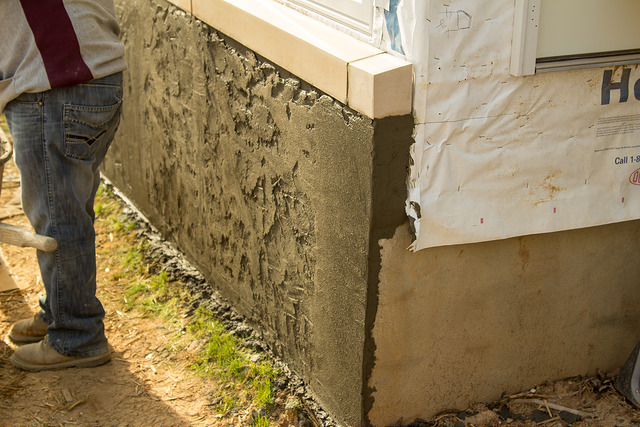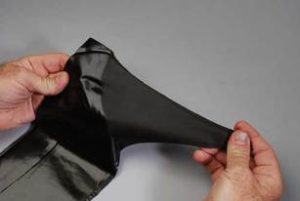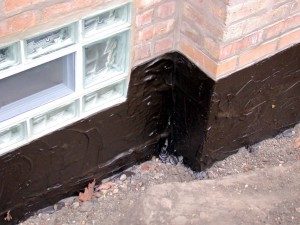How Are Waterproofing Membranes Made?

Keeping a basement dry means keeping moisture off the outside of the concrete foundation. For this, many homeowners turn to a waterproofing membrane. How are these products made and will they stand up to the pressures surrounding your basement?
How Are Waterproofing Membranes Made?

A waterproofing membrane is a thin layer of water-tight material laid over the concrete. These membranes consist of thin layers of waterproof material like plastic, rubber, coated fabric materials, or petroleum-based asphalt material, and they come as sheets or in a spray-on application. The layer is usually 2 to 4 millimetres thick.
One of the most important properties of the material is its absorption rate. This is usually between 1 – 2%, though it’s acceptable for the absorption rate to go up to 4%. In this way, the thickness of the material is important, and most manufactured materials have a uniform thickness so that the application is even with no seams.
Foundation experts use these materials because they stand up to hydrostatic pressure and chemical erosion. The membranes must also have a low absorption rate, uniform thickness, and flexibility. This is because most foundation companies (not us, but more on that below!) will often use the membrane as the only foundation defense.
Spray-On Membranes
The material must be able to stop water from getting at and into foundations and basement walls, either by an exterior (positive) or an interior (negative) application. For a positive application, an asphaltic waterproofing membrane is a popular choice. It comes as a sticky liquid emulsion form that holds well to vertical concrete surfaces, and it can be applied as a spray or with a roller and trowel. A fibreglass webbing material will often be applied between the coatings for more reinforcement.
Liquid waterproofing is ideal for interior or “negative” applications, too: it’s known for its easy application, low volatile organic compound (VOC) content, and for waterproofing hard-to-reach places. The liquid membrane provides excellent coverage and offers the most value of all waterproofing types because it won’t crack or shrink in hot, dry conditions.
We will use a spray-on tar coating before the crushed roundstone when repairing and shoring up your foundation. The other kind of waterproofing membrane is sheeting, and this type presents more problems for your home, especially when used alone for foundation protection.
Membrane Sheets
Membranes also come as films or sheets that mechanically fasten to the concrete. Self-adhering membranes, also known as “peel and stick” membranes, have an integral layer of adhesives; before application, the contractor will peel a release liner off the adhesive coating and stick the membrane onto the surface before the backfill.
There are also non-adhesive membrane sheets; these are PVC and polyurethane rubber sheets that can be removed and repositioned as needed. Contractors can weld the seams and joints of these sheets to shore up any potential weaknesses. If the contractors use the membrane sheet for a positive application, they must be very careful in how they prepare the ground. The soil has to be compacted and level, with any sharp stones removed and a layer of sand down before the backfill is re-added.
After ensuring that there’s nothing that can potentially pierce the membrane, it can be rolled on top of the concrete, taking the shape of the foundation slab as it’s applied. If this is all that’s done to protect your basement, you’ll be in for more problems in the future!
Membranes Are Only One Part Of Good Foundation Waterproofing!
Membranes can be important for foundation waterproofing, but they shouldn’t be the only line of defense. Common failures include the membrane de-bonding from the foundation, curing failures, inconsistencies in the thickness, and punctures from tree roots and small burrowing animals. Even a small weakness will let moisture come into contact with the concrete, creating expensive, long-term foundation problems.
Don’t leave the protection of your foundation up to a membrane, no matter how well-constructed – a more solid choice is the crushed roundstone treatment. When combined with a spray-on tar membrane, weeping tiles, a working sump pump, and other measures, your basement will stay safe and dry!

